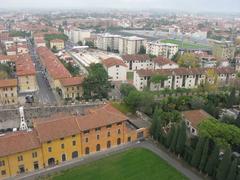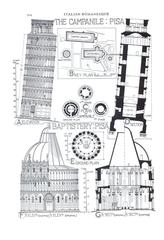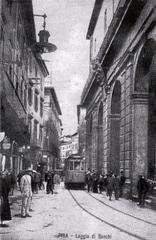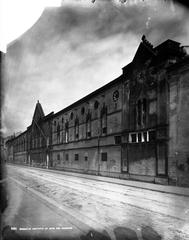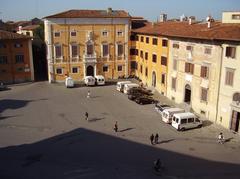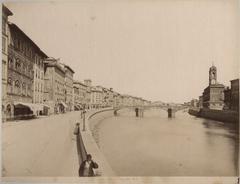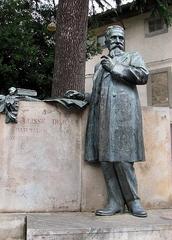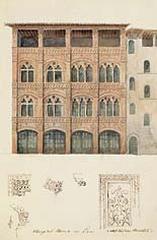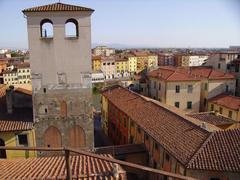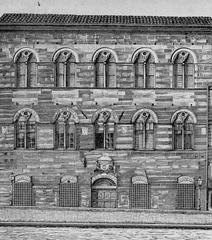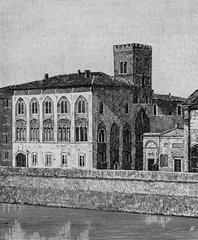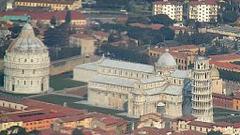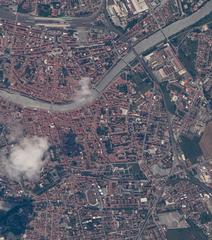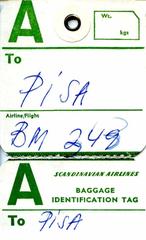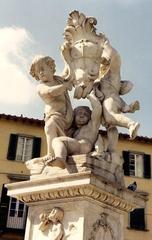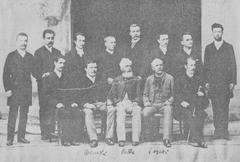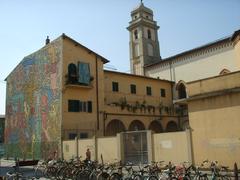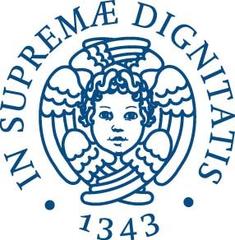Madonna dei Vetturini Pisa: Visiting Hours, Tickets, and Complete Historical Guide
Date: 14/06/2025
Introduction
The Madonna dei Vetturini, a striking example of 14th-century Gothic sculpture in Pisa, Italy, is both a masterpiece of religious art and a symbol of local civic identity. Attributed to the renowned Nino Pisano, this wooden relief embodies an elegant synthesis of Italian and French Gothic influences. Originally commissioned for the Church of Santa Maria della Spina, the Madonna dei Vetturini has served over centuries as a spiritual protector, particularly for the vetturini (coachmen) and hunters of Pisa. Today, the original sculpture is preserved in the Museo Nazionale di San Matteo, with a faithful replica displayed at its historic outdoor site in Borgo Stretto. This guide provides in-depth historical context, visiting information, and practical travel tips to help you plan a rewarding visit to one of Pisa’s most evocative hidden gems.
For additional resources, consult Catalogo Beni Culturali, Turismo Pisa, and local coverage (Il Tirreno).
Table of Contents
- Introduction
- Historical Background
- Artistic Features and Legacy
- Visiting the Madonna dei Vetturini: Practical Information
- Frequently Asked Questions (FAQ)
- Visuals and Media
- Conclusion and Call to Action
- References and Further Reading
Historical Background
Origins and Artistic Attribution
The Madonna dei Vetturini is attributed to Nino Pisano, a prominent Pisan sculptor active between 1343 and 1368, and son of the celebrated Andrea Pisano (Catalogo Beni Culturali). Nino Pisano’s mature style is evident in the Madonna’s delicate drapery, harmonious proportions, and gentle facial features, which reflect the influences of Simone Martini and French Gothic sculpture (Turismo Pisa). The original is a cusped wooden relief with traces of polychromy and gilding, dating to around 1360–1370. Restoration in the 1950s revealed original gilded backgrounds, halos, blue mantle, and a red-trimmed cushion beneath the Madonna (Il Tirreno).
Early Placement and Religious Function
Initially housed in the Church of Santa Maria della Spina on the Arno River, the Madonna dei Vetturini was a focal point for local devotion (Turismo Pisa). In 1586, Archbishop Dal Pozzo relocated the sculpture to the entrance of Borgo Stretto (“alle sette colonne”) to make it more accessible for prayers, especially during turbulent times (Il Tirreno).
Social and Cultural Significance
The name “Madonna dei Vetturini” stems from its proximity to the main vetturini (coachmen) station in Pisa and its role as protector of travelers and hunters (Pisa in Video). Its public display reflected a shift in sacred art’s civic and communal function.
Conservation and Modern History
Exposure to the elements over centuries led to significant deterioration. In 1982, authorities moved the original to the Museo Nazionale di San Matteo for preservation, replacing it with a weather-resistant replica at Borgo Stretto (Il Tirreno). Recent years have seen renewed restoration efforts, including a major city-approved project in 2024 to restore the work’s original luster (La Nazione).
Artistic Features and Legacy
The Madonna dei Vetturini is celebrated for its refined Gothic lines, flowing drapery, and warm expressiveness. The composition—Madonna enthroned with the Christ Child—conveys both majesty and intimacy. Decorative elements, such as the now-lost movable halo, and polychrome details once enhanced its visual impact. The sculpture remains a touchstone of Pisan Gothic art and a symbol of the city’s religious and artistic heritage (Turismo Pisa).
Visiting the Madonna dei Vetturini: Practical Information
Location and Access
- Original: Museo Nazionale di San Matteo, Lungarno Mediceo, Pisa
- Replica: Entrance to Borgo Stretto, under the “alle sette colonne” arcade
Both are centrally located and easily accessible by foot, public transport, or taxi.
Visiting Hours
- Museo Nazionale di San Matteo: Tuesday–Sunday, 9:00 AM – 7:00 PM. Closed Mondays and public holidays.
Tickets
- Adult: €6
- Reduced (EU citizens 18–25): €3
- Free: Residents of Pisa under 18 and over 65
- Tickets are available online or at the museum entrance.
Accessibility
The Museo Nazionale di San Matteo is fully wheelchair accessible. The outdoor replica at Borgo Stretto is visible without entry or barriers.
Guided Tours and Special Events
Guided tours focusing on Pisan Gothic art, including the Madonna dei Vetturini, are available through the museum or local tour operators. Check the museum’s website for updates on exhibitions and restoration projects.
Nearby Attractions
- Church of Santa Maria della Spina: Exquisite riverside Gothic church.
- Piazza dei Miracoli: Home to the Leaning Tower, Cathedral, and Baptistery.
- Museo dell’Opera del Duomo: Medieval and Renaissance artworks.
Travel Tips
- Arrive early to avoid crowds.
- Combine your visit with nearby historic sites.
- Wear comfortable shoes for exploring Pisa’s cobbled streets.
Frequently Asked Questions (FAQ)
Q: Can I see the original Madonna dei Vetturini outdoors?
A: The original is preserved indoors at the Museo Nazionale di San Matteo. A replica is displayed at Borgo Stretto.
Q: Are photography and video allowed at the museum?
A: Photography is generally permitted without flash. Always check with staff for video policies.
Q: Is there an entry fee to see the outdoor replica?
A: No, the Borgo Stretto replica is freely visible in the public space.
Q: How do I get to the Museo Nazionale di San Matteo?
A: The museum is centrally located and accessible by public transport, taxi, or on foot from major landmarks.
Visuals and Media
- Images: Include high-quality photos of the original Madonna dei Vetturini at Museo Nazionale di San Matteo and the Borgo Stretto replica.
- Alt Text Suggestions: “Madonna dei Vetturini original sculpture at Museo Nazionale di San Matteo”, “Replica of Madonna dei Vetturini at Borgo Stretto Pisa”.
- Maps: Provide a map of Pisa highlighting both locations.
Conclusion and Call to Action
The Madonna dei Vetturini offers a rare window into Pisa’s medieval heart, uniting artistry, faith, and civic memory. Whether you’re an art lover, a history enthusiast, or a cultural traveler, a visit to the Museo Nazionale di San Matteo and Borgo Stretto enriches your experience of the city’s heritage.
Plan your visit today, and deepen your understanding of Pisa’s hidden treasures. For personalized travel guides and updates, download the Audiala app, and follow us on social media for the latest news and cultural insights.
References and Further Reading
- Catalogo Beni Culturali
- Turismo Pisa
- Il Tirreno
- Pisa in Video
- La Nazione
- Comune di Pisa - Santa Maria della Spina
- Florence Tips - Pisa
- Nomadic Matt - Pisa travel guide
- Rough Guides
- The Crazy Tourist
- The Thinking Traveller
- The Geographical Cure
- Andoreia
